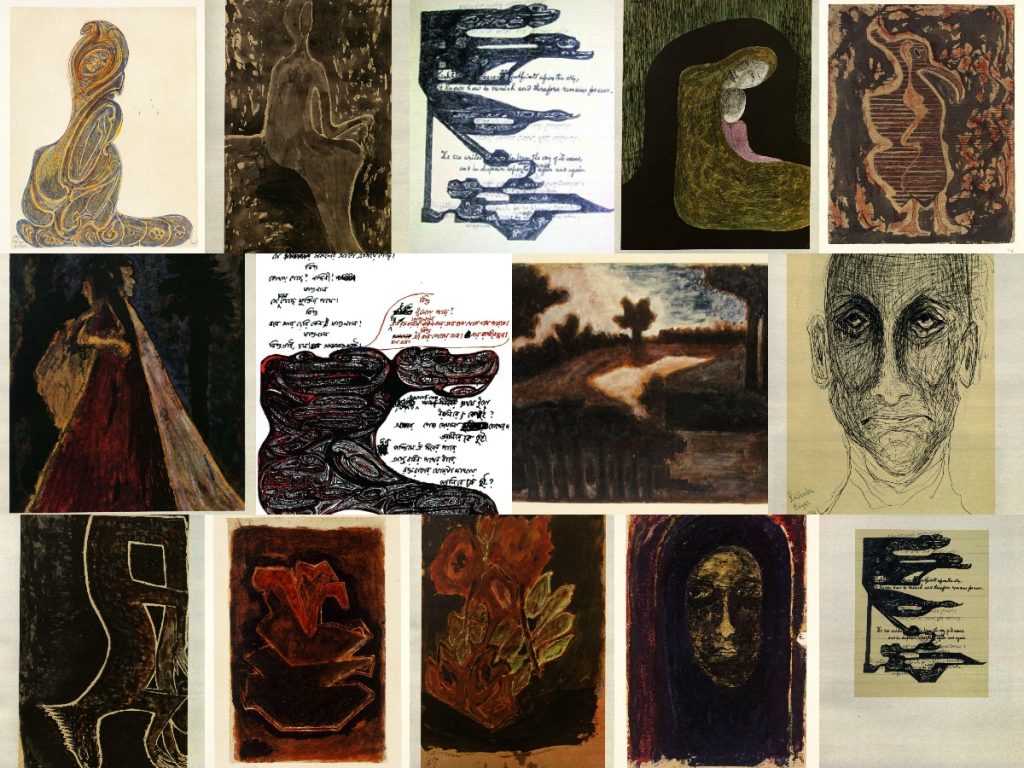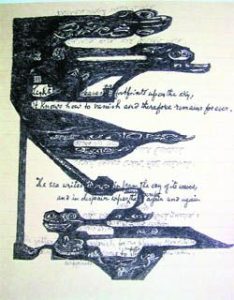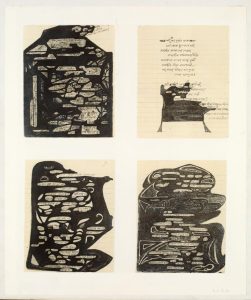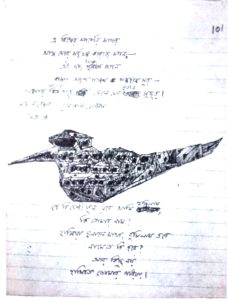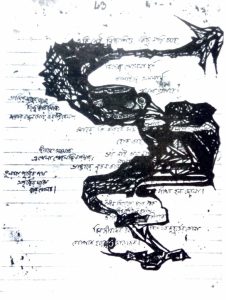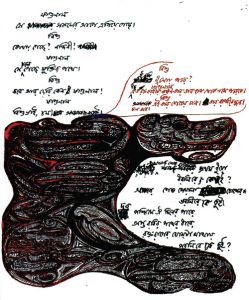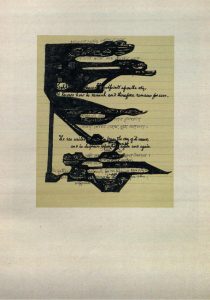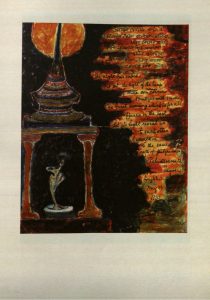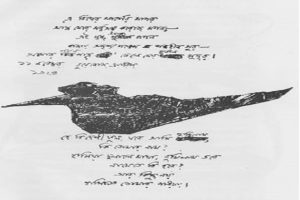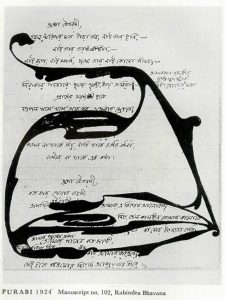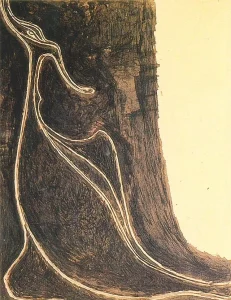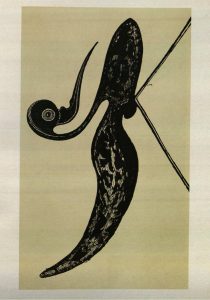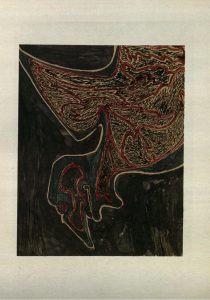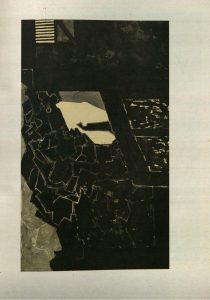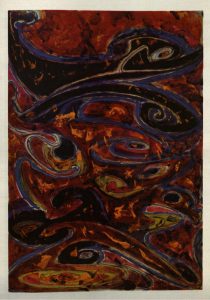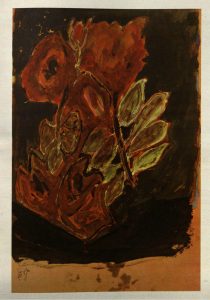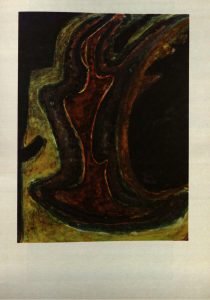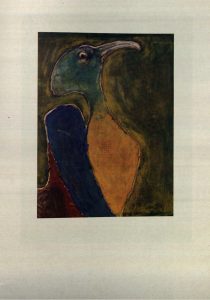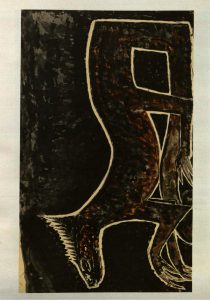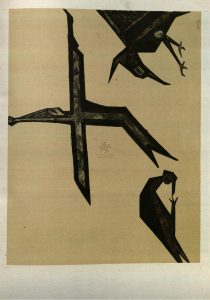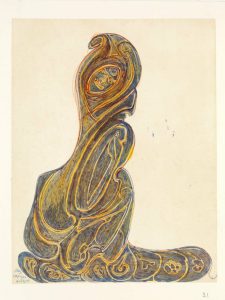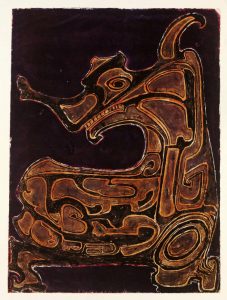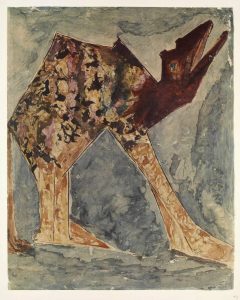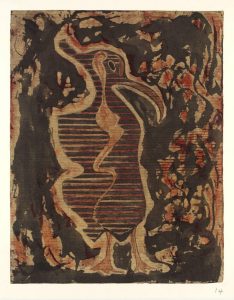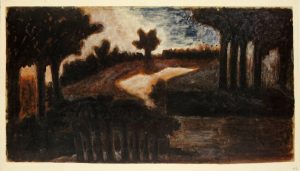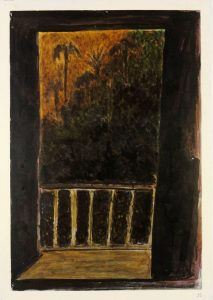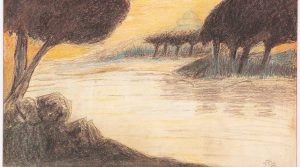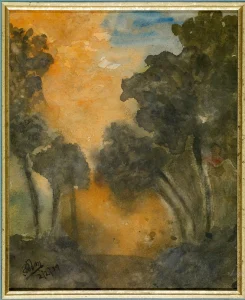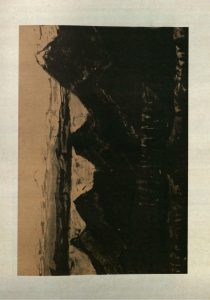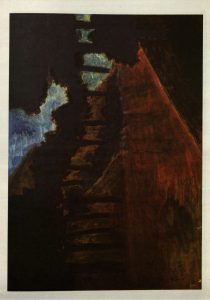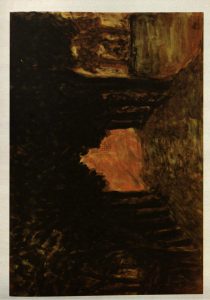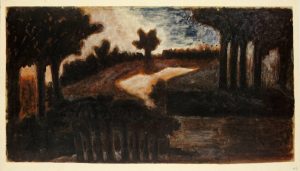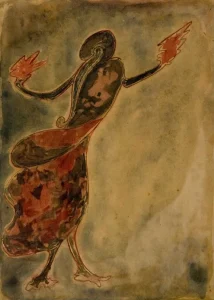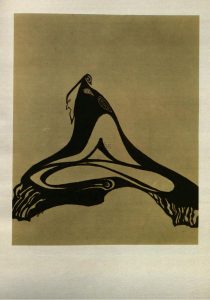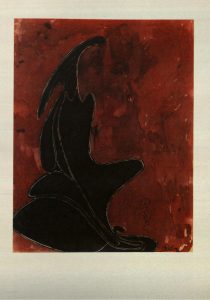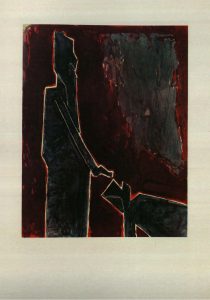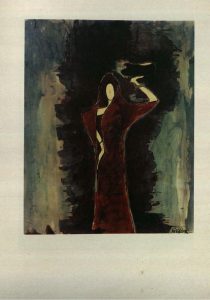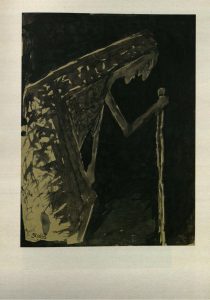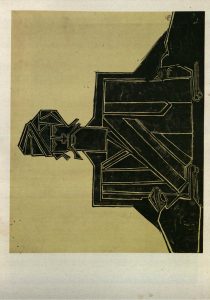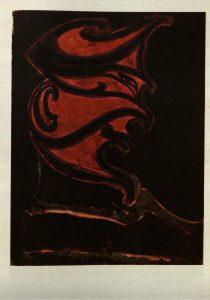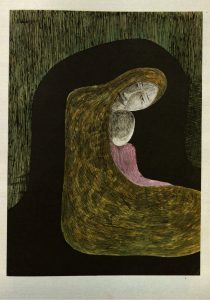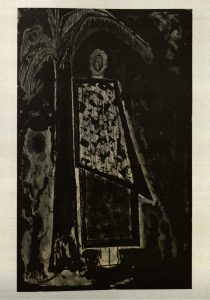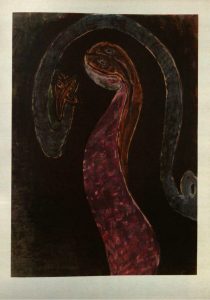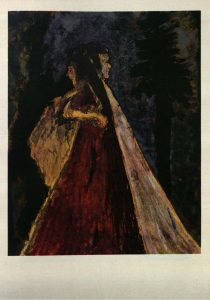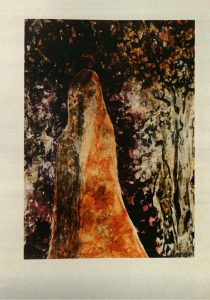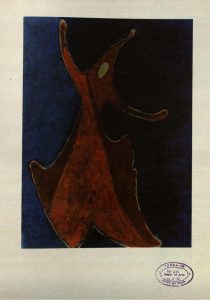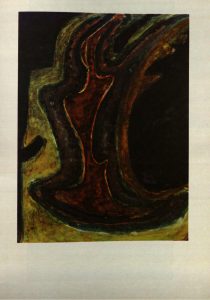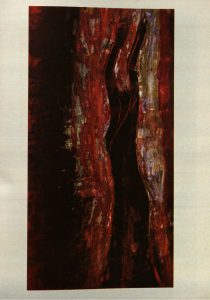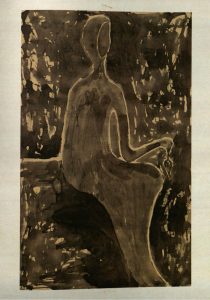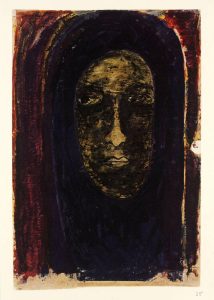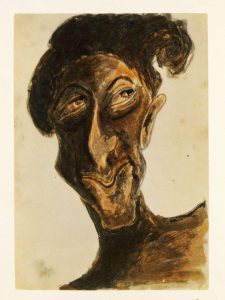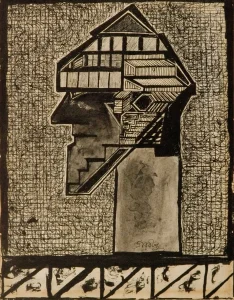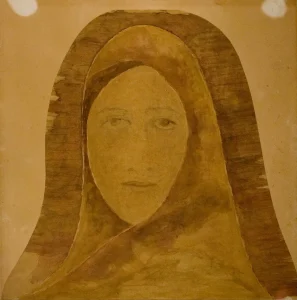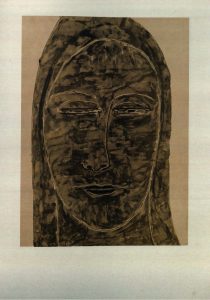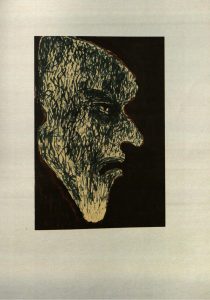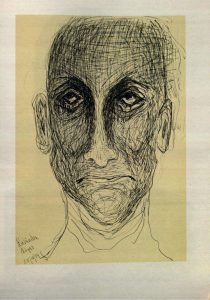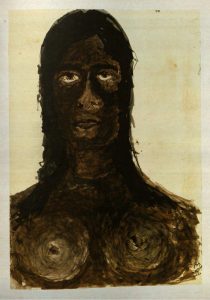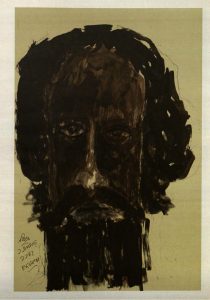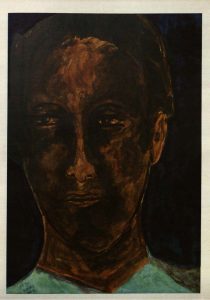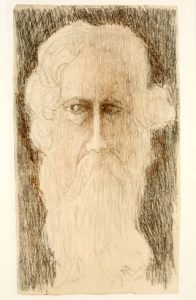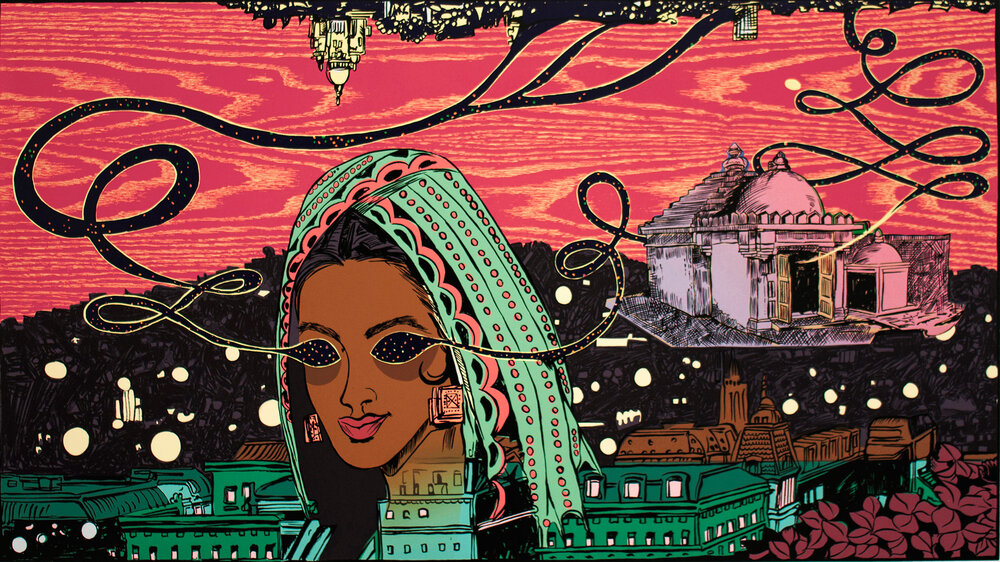The paintings of Tagore are India’s first to ever exhibit across Europe, Russia and the United States. Unlike his nephews, Abanindranath and Gaganendranath, he was never a part of the Bengal School of Art. Despite that, his first paintings were highly imaginative works, usually focusing on animals or imaginary creatures full of vitality and humour. Human figures are depicted as individuals with expressive gestures or as groups in theatrical settings. He rendered the human face in portraits produced during the 1930s in a manner reminiscent of masks and personas. The landscape paintings Tagore produced represent the smallest portion of his overall output. Of these, his scribblings and erasures are mainstream due to their uniqueness, a portion of which can be seen at the “Rabindra Sadan” metro station in Kolkata. “The Gallery of Tagore” is divided into 5 categories, Erasures/Scribblings, Animals/Fantasy, Landscape, Figurines and Human Faces
Erasures/scribblings:
Scribblings and Erasures are the earliest works of Tagore. Through the process of crossing out words and lines, he created images that were expressive and sometimes grotesque. Their formation was unplanned and influenced by accidents and intuitive decisions.
Animals/Fantasy:
Animals drawn by Tagore are described as “a probable animal that had unaccountably missed its chance of existence” or “a bird that only can soar in our dreams” by him. Tagore was fond of projecting human gestures onto animal bodies and the other way around. In exchange for the familiar with the unknown, he created forms that are as expressive as they are inventive.
Although he was an untrained artist and sometimes referred to his paintings as “foundlings”.Tagore was constantly observing and interpreting the world around him, which he referred to as “a vast procession of forms”. As he painted landscapes later in his life, he often depicted nature bathed in evening light with radiant skies and forms coagulating into ominous silhouettes evoking mystery and foreboding.
Figurines:
Tagore left his paintings unnamed and by doing so, he wanted its observers to come up with an explanation of his paintings. He wanted to free his paintings from tags and left them for the seer’s imagination. His figurines were inspired by the experience he had in theatre as a result, his figures have a dramatic presence, animated by gestures which do not suggest everyday activities. His figures often depict narrative, rather, they invite the observer to create a narrative.
Human faces:
Tagore as a writer would often portray his humans with their innermost self guarded by an outer shell fitting the description of the society. This is also observed in his paintings.

